

Inspirational Safety Speeches for Graduations, Projects, and More

Safety is an essential aspect of our daily lives, whether at work, at school, or in our homes. It’s a critical topic that deserves our attention and focus, no matter the occasion. That’s why I’m excited to present this article containing various safety speeches for different occasions.
Inside these speeches, you’ll find important reminders of the role safety plays in our lives and how to prioritize it in different settings. From graduation ceremonies to project launches, these speeches are meant to inspire and motivate individuals and teams to make safety a top priority.
Each speech is unique, yet they all share a common thread: the importance of safety in our daily lives. Whether you’re a student, a worker, a manager, or a leader, these speeches will provide you with valuable insights and practical advice on how to prioritize safety and create a safe and healthy environment.
I hope these speeches will inspire you to make safety a priority in your life and encourage you to share them with others. Remember, safety is everyone’s responsibility, and by working together, we can create a safer, healthier, and more productive world.
Safety Speech Open Air Opening Ceremony
Safety speech prior to starting a project, safety speech for graduation ceremony, bonus parts you can include in your safety speech.
Good day everyone,
As we gather here today for our outdoor event on the graded ground in this hot weather, I want to remind everyone of the importance of safety precautions. It’s essential to ensure that everyone has a pleasant and enjoyable experience without compromising their safety.
- First and foremost, make sure to stay hydrated. The heat and sun can take a toll on your body, so it’s crucial to drink plenty of water or other hydrating fluids regularly. We have arranged for water stations throughout the venue, and we encourage you to make use of them frequently.
- Secondly, Despite our event is planned to not to take long, we have prepared some chairs in the corner for those of you who might feel exhausted or tired and prefers to sit.
- Thirdly, we ask that you be mindful of your surroundings. Keep an eye out for potential hazards on the ground, such as loose rocks, potholes, or uneven terrain. If you see anything that could cause harm, please inform the event staff immediately.
- Fourthly, we have Ms. ***, our Nurse is here to provide first aid services for out esteemed guests.
- Finally, please follow all safety guidelines and regulations. We have put in place measures to ensure everyone’s safety, including crowd control, emergency procedures, and security measures. Please cooperate with our staff and follow their instructions at all times.
At the end, we want everyone to have a great time while staying safe at our event. Let’s all do our part to make this event enjoyable and memorable for everyone. Thank you.
Dear Project Team,
Congratulations on the start of our new project! As we embark on this exciting journey, I want to remind you of the importance of safety.
Safety should be a top priority for everyone involved in this project. Whether you’re working in an office or a construction site, it’s crucial to take safety seriously and make it a part of your daily routine.
Always assess potential hazards in your work environment and take appropriate measures to minimize risks. This may include wearing safety equipment, following established safety procedures, and staying alert to potential dangers.
In addition, make sure that everyone on the project team is aware of the safety protocols and procedures that are in place. Encourage open communication and a culture of safety so that everyone feels comfortable reporting any safety concerns or incidents.
Remember that safety is not just about avoiding accidents or injuries. It’s also about creating a safe and healthy work environment for everyone involved. By prioritizing safety, you’re not only protecting yourself and your colleagues, but you’re also contributing to the success of the project.
As you start this new project, I encourage you to take safety seriously and make it a priority in all your work. By doing so, you’re setting a strong foundation for success and creating a positive and productive work environment for everyone involved.
Good luck with your project, and stay safe!
Dear Graduates,
Congratulations on your achievement! As you prepare to enter the next phase of your life, I want to take a moment to remind you of the importance of safety.
Safety is a crucial aspect of our daily lives, and it should be taken seriously. Whether you’re entering the workforce, starting a new academic program, or traveling to new places, it’s essential to keep safety in mind at all times.
As you move forward, I urge you to prioritize your safety and the safety of those around you. Take the time to assess potential hazards in your environment, and always be aware of your surroundings. Whether it’s a busy city street, a construction site, or a natural disaster, it’s important to know how to keep yourself safe.
Remember to take proper precautions, such as wearing safety equipment, following established procedures, and seeking help when necessary. Never be afraid to speak up if you feel unsafe, and always listen to the advice of those who have more experience.
In the modern world, safety can sometimes be taken for granted, but it should never be underestimated. Your safety is essential to your success, your well-being, and your future.
So, as you celebrate your graduation and look forward to your next adventure, I encourage you to stay vigilant, stay safe, and remember that safety always comes first. Congratulations again, and best of luck in all your future endeavors.
- Please wear appropriate clothing and footwear. The ground is graded, and the weather is hot, so we advise wearing comfortable and breathable clothing that covers your skin and protects you from the sun. Additionally, it’s best to wear closed-toe shoes that offer adequate support and grip.
Leave A Comment Cancel reply
Save my name, email, and website in this browser for the next time I comment.
Copyright@ 2015 EntirelySAFE. All Rights Reserved
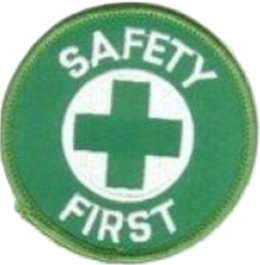
EHS Safety News America Blog 🇺🇸
EHS News, Workplace Safety, Science, Climate Safety, and OSHA Updates for Safety Professionals
One of the Best Safety Speeches Ever By Alcoa CEO #WorkplaceSafety
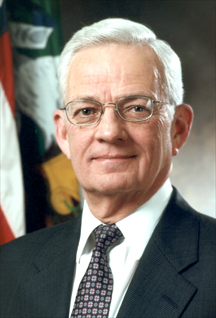
by Marie-Claire Ross at Digicast.com
A great safety speech isn’t about telling staff to improve safety. Instead, it’s a unique opportunity to motivate staff to work together for a common good.
On a windy day in October 1987, the new CEO of Alcoa , Paul O’Neill, gave his maiden speech to shareholders. Most CEO’s would use this opportunity to get shareholders excited that they were going to focus the company on increasing sales and reducing costs, for improved shareholder return. But O’Neill was different.
“I want to talk to you about worker safety .” In an instant, shareholders wondered why he had omitted to talk about improving profits. After all, Alcoa was in a mess.
“Every year, numerous Alcoa workers are injured so badly that they miss a day of work. Our safety record is better than the general workforce, especially considering that our employees work with metals that are 1500 degrees and we have machines that can rip a man’s arm off. But it’s not good enough. I intend to make Alcoa the safest company in America. I intend to go for zero injuries.”
As quoted in the Power of Habits by Charles Duhigg, the audience was confused. Why wasn’t O’Neill making them feel warm and fuzzy? How were they going to make money by focusing on safety?
Eventually, someone raised a hand and asked about inventories in the aerospace division. While another person asked about the company’s capital ratios.
O’Neill held firm, “I’m not certain you heard me. If you want to understand how Alcoa is doing, you need to look at our workplace safety figures. If we bring our injury rates down, it won’t be because of cheerleading or the nonsense you sometimes hear from other CEOs . It will be because the individuals at this company have agreed to become part of something important: They’ve devoted themselves to creating a habit of excellence. Safety will be an indicator that we’re making progress in changing our habits across the entire institution. That’s how we should be judged.”
At the end of his speech, the crowd ran out the door as if there was a fire. All in a panic-stricken rush to sell their Alcoa stock as fast as they could.
Those who held onto their Alcoa stock were handsomely rewarded. Within a year of O’Neill’s speech, Alcoa’s profits hit a record high. By the year 2000, when O’Neill retired, Alcoa’s market capitalization was 5 times more than what it was in 1987.
So what made O’Neill’s safety speech one of the best in the 20th century?
He started with why. As Simon Sinek says in the brilliant book, “Start with a Why”, great leaders communicate from the inside out. He started with a powerful “why”. O’Neill’s speech certainly got the attention of his audience. He then moved to “how” they were going to improve safety and then the “what”. Other leaders communicate the “what”, “how” and then the “why”. It would have been easy (and expected) for him to have just talked about improving sales and reducing costs (what) and then “how: they would do it. This would have kept shareholders and share brokers happy. Instead, he chose to talk about safety and become the champion for Alcoa workers.
One Behavior Change at a Time
As quoted in The Power of Habits, O’Neill said, “you can’t order people to change. That’s not how the brain works. So I decided I was going to start by focusing on one thing. If I could start disrupting the habits around one thing, it would spread throughout the entire company”.
He chose improving safety as the key habit to bring the entire company together. He chose a habit that would have everyone in alignment – unions and managers. And it meant total operational transformation.
Humans can only learn and remember so much information at once. The more information you give people – the more they can get paralyzed by it.
According to Chip and Dan Heath from “ Made to Stick ” creating a memorable message is all about stripping an idea down to its core.
O’Neill did this brilliantly when he focused the workforce on one aspect – safety. And then he made this memorable by creating the tagline “Zero injuries”.
The Power of the Group
But what he also did rather skillfully was to encourage group behavior. He encouraged Alcoa workers to consider the safety of the group rather than themselves. He rallied the workforce to work together for a common goal.
Humans see themselves in terms of other people and groups. Evolution has taught us that it is beneficial to live in tribes, where we can share out the work of daily survival.
O’Neill harnessed the strong human need for group identity to build a thriving organization. The trick in using group identity when wanting staff to change behavior or embrace a new goal is to word it so they make a decision based on what’s best for the group. Activating peer pressure is an effective way to get a group to persuade others to act in a certain way
And you’ll notice that O’Neill never used the word “I” in his speech. Saving lives wasn’t about him. It was about the group – it was about the Alcoa workforce.
He also cleverly used a shareholder meeting, to let his staff know, that he wasn’t there to increase shareholder returns. He was there to improve their quality of life, to ensure that they would arrive home safely at the end of the day. By launching his first speech to outsiders, he powerfully communicated to staff, just how committed he was to improve their workplace. That he could be trusted. That he was on their side.
He even took this further. According to Tim O’Bryan, in an article titled “Analytical Decision Making and the Alcoa Transformation”, O’Neill introduced a new companywide policy that whenever someone was injured, that the unit president had to report it to O’Neill within 24 hours and present a plan for making sure it never occurred again.
This opened up the flow of communication. Workers told their floor managers who told the vice president about injuries but also to raise warnings when they saw a potential problem. A suggestion box was filled with ideas for solutions so that if the vice president requested a plan, a collection of suggestions was submitted.
Spare No Expense on Safety
O’Neill believed that they way to keep employees staff was to discover why injuries were occurring in the first place.
This was done by studying what was going wrong in the manufacturing process. Employees received training about quality control and how to work more efficiently. By ensuring that employees developed the habit of doing tasks right in the first place, their work became safer.
Starting with his inaugural speech, Paul O’Neill transformed Alcoa into an efficient, open communication workplace that was the safest aluminum company on earth. By transforming workplace safety into a daily habit, O’Neill improved efficiency and sales.
By taking care of the “why”, he took care of the “how” and “what”.
See more articles by this author at Digicast.com
Please Share With Others!
- Click to share on Twitter (Opens in new window)
- Click to share on LinkedIn (Opens in new window)
- Click to share on Facebook (Opens in new window)
- Click to print (Opens in new window)
- Click to share on Pinterest (Opens in new window)
- Click to share on Tumblr (Opens in new window)
- Click to share on Reddit (Opens in new window)
- Click to share on Pocket (Opens in new window)
- Click to share on WhatsApp (Opens in new window)
- Click to email a link to a friend (Opens in new window)
- Click to share on Threads (Opens in new window)
- Click to share on X (Opens in new window)
- Click to share on Telegram (Opens in new window)
Published by Jack Benton
Suburban Chicago Environmental, Health, Safety Specialist & Loss Control & Risk professional. I am "Passionate About Safety" - Full-Time Job Leads Always Welcomed! ~ Contact me through LinkedIn View all posts by Jack Benton
7 thoughts on “ One of the Best Safety Speeches Ever By Alcoa CEO #WorkplaceSafety ”
- Pingback: One of the Best Safety Speeches Ever By Alcoa CEO #WorkplaceSafety – EHS Safety News America
Yes its true I completely agree safety of the employees should be the priority of the company as all the employees are the assets for company and in the development of a company, organization every employee has its role..
- Pingback: The CEO’s Role in Safety & Beyond -
Absolutely true worker’s safety is directly linked with work performance. Mr. Paul O’Neill was perfect businessman.Making safety as daily habit is need to all industries.
Like Liked by 1 person
I agree Tim!
- Pingback: Corporate Social Responsibility (CSR) Definition (In Depth)
- Pingback: The Top Insurance Companies In Us | Has Your Insurance
Comments Welcomed! Cancel reply
This site uses Akismet to reduce spam. Learn how your comment data is processed .
Discover more from EHS Safety News America Blog 🇺🇸
Subscribe now to keep reading and get access to the full archive.
Type your email…
Continue reading

- Already have a WordPress.com account? Log in now.
- Subscribe Subscribed
- Copy shortlink
- Report this content
- View post in Reader
- Manage subscriptions
- Collapse this bar
You must be logged in to post a comment.
- Engineering and Architecture
- Management and Business Administration
- Medicine and Allied Sciences
- Animation and Design
- Media, Mass Communication and Journalism
- Finance & Accounts
- Computer Application and IT
- Hospitality and Tourism
- Competition
- Study Abroad
- Arts, Commerce & Sciences
- Online Courses and Certifications
National Safety Day Speech in English: Short and Long Speech
National Safety Day is an annual event observed in India on March 4. It is an initiative by the National Safety Council of India (NSCI) to raise awareness about safety measures and promote a safety culture across various sectors. The day aims to educate people about the importance of safety in their daily lives, including at home, workplace, and while travelling.
10 Lines Speech on National Safety Day
Short speech on national safety day, long speech on national safety day.
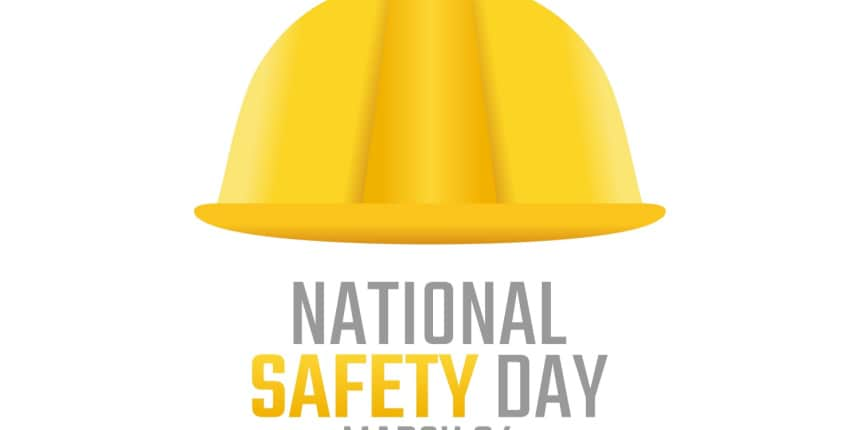
National Safety Day is celebrated every year in India on March 4.
It is an initiative by the National Safety Council of India to promote safety awareness.
The theme of National Safety Day changes every year to highlight different aspects of safety.
The day aims to raise awareness about the importance of safety measures in various sectors.
It emphasises the need for individuals to take responsibility for their safety and that of others.
National Safety Day promotes the adoption of a safety culture in all aspects of life.
The day includes various activities such as safety training, seminars, and awareness campaigns.
The National Safety Council of India recognises organisations for their commitment to safety on this day.
National Safety Day serves as a reminder to review safety policies and make necessary changes.
The ultimate goal of National Safety Day is to prevent accidents and promote a safe and secure environment.
Today we gather here to celebrate National Safety Day. Safety is an important aspect of our lives, and it is crucial that we take it seriously. Safety measures are not just a matter of following rules and regulations but also about adopting a safety culture as a way of life.
We often take safety for granted, but it is important to remember that safety is everyone's responsibility. We all have a role to play in ensuring our safety and that of those around us. This means following safety guidelines, wearing safety gear, and reporting safety hazards. We should not overlook safety in our day-to-day activities, whether it is at home, work, or while travelling.
It is also important to remember that safety is not just about following rules but also about creating a safety culture. We must create a culture of safety where safety is not just a matter of compliance but a way of life. This means promoting safety awareness, conducting safety audits, and training employees on safety measures.
On this National Safety Day, let us pledge to make safety a priority in our lives. Let us take responsibility for our safety and that of those around us. By doing so, we can ensure that we live in a safe and secure world.
National Safety Day is observed in India on March 4 every year. It is a day to raise awareness about the importance of safety at workplaces and in our daily lives. The day focuses on promoting safety measures and preventing accidents. Every year, a theme is chosen for National Safety Day to highlight a particular area of safety concern.
Importance of National Safety Day
National Safety Day is an important day because it reminds us that safety is a priority. It is a day to raise awareness about the need to prevent accidents and promote safety at workplaces and in our daily lives. The day highlights the importance of following safety rules and regulations and taking necessary precautions to avoid accidents. By promoting safety measures, we can create a safer environment for ourselves and those around us.
How to Promote Safety as a Priority
Promoting safety as a priority begins with awareness. We must be aware of the potential hazards in our daily lives and work environment. This means identifying potential risks and taking the necessary precautions to prevent accidents from happening.
In the workplace, employers can promote safety by providing regular training to employees. This training should cover safety measures and procedures, emergency response plans, and the proper use of equipment and machinery. Employers should also conduct regular safety audits to identify potential hazards and ensure that safety measures are being followed.
As individuals, we can promote safety by following safety rules and regulations. This includes wearing personal protective equipment when necessary, following traffic rules and regulations, and taking necessary precautions when working at heights or in hazardous environments.
Celebration In Schools
Schools celebrate National Safety Day by organising various activities and events to promote safety awareness among students. Here are some ways schools can celebrate National Safety Day:
Conduct safety drills: Schools can conduct safety drills such as fire drills, earthquake drills, and evacuation drills to educate students on safety measures.
Organise safety awareness programs: Schools can organise safety awareness programs such as seminars, workshops, and talks by safety experts to educate students about safety measures.
Display safety posters: Schools can display safety posters in classrooms and corridors to remind students of safety measures and precautions.
Conduct safety inspections: Schools can conduct safety inspections to identify safety hazards and take corrective actions to ensure a safe learning environment.
Conduct safety quizzes and competitions: Schools can conduct safety quizzes and competitions to engage students in safety awareness and promote healthy competition.
Promote safety through curriculum: Schools can include safety topics in their curriculum to educate students about safety measures and precautions.
Distribute safety pamphlets: Schools can distribute safety pamphlets to students and parents to create awareness about safety measures at home and school.
Schools can use National Safety Day as an opportunity to promote safety awareness and create a culture of safety among students. The ultimate goal of National Safety Day is to prevent accidents and promote a safe and secure environment. It aims to instil a sense of responsibility towards safety in individuals and organisations and promote a culture of safety across the country.
Students also read:
Applications for Admissions are open.
Vmc viq scholarship test.
Register for Vidyamandir Intellect Quest. Get Scholarship and Cash Rewards.
JEE Main Important Physics formulas
As per latest 2024 syllabus. Physics formulas, equations, & laws of class 11 & 12th chapters
JEE Main Important Chemistry formulas
As per latest 2024 syllabus. Chemistry formulas, equations, & laws of class 11 & 12th chapters
TOEFL ® Registrations 2024
Accepted by more than 11,000 universities in over 150 countries worldwide
Pearson | PTE
Register now for PTE & Unlock 20% OFF : Use promo code: 'C360SPL20'. Valid till 30th NOV'24! Trusted by 3,500+ universities globally
JEE Main high scoring chapters and topics
As per latest 2024 syllabus. Study 40% syllabus and score upto 100% marks in JEE
Download Careers360 App
All this at the convenience of your phone.
Regular Exam Updates
Best College Recommendations
College & Rank predictors
Detailed Books and Sample Papers
Question and Answers
Scan and download the app
- +1 (800) 826-0777
- VIRTUAL TOUR
- Mass Notification
- Threat Intelligence
- Employee Safety Monitoring
- Travel Risk Management
- Emergency Preparedness
- Remote Workforce
- Location and Asset Protection
- Critical Communication
- Business Continuity
- Why AlertMedia
- Who We Serve
- Customer Spotlights
- Resource Library
- Downloads & Guides
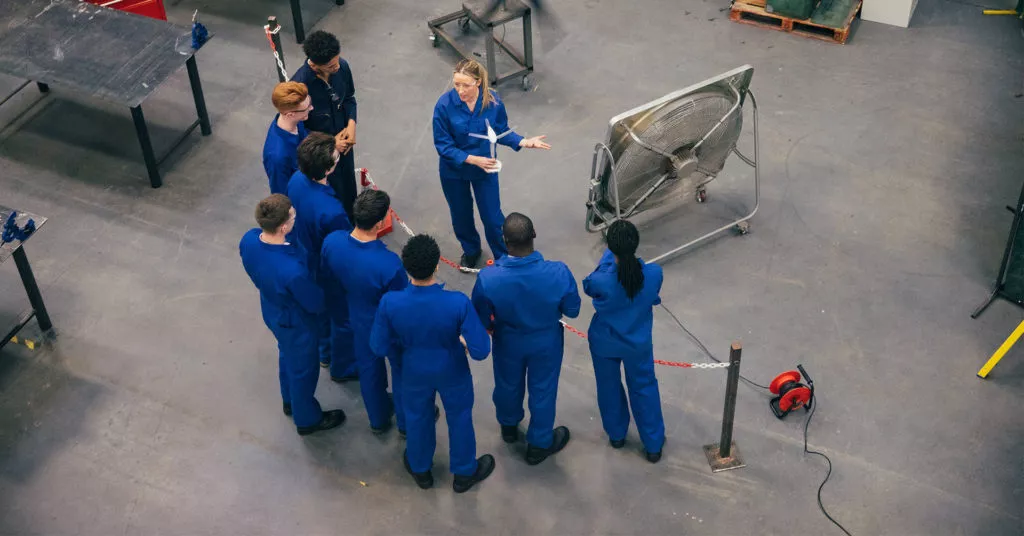
32 Short Safety Talks: Topics & Ideas to Boost Engagement
Leaving conversations about safety to quarterly meetings and occasional safety training means safety skills and awareness atrophy over time. Want a way to refresh critical concepts without losing everyone’s attention? We have you covered with safety-in-the-workplace topics.

- What Are Safety Talks?
- How to Make Safety Talks More Engaging
32 Safety Talk Topics
No matter what kind of work you do, it’s easy to become complacent, especially if you’ve spent most of your days performing familiar tasks on repeat. It can be tempting to cut corners and forego best practices in the interest of time, productivity, and effort. If you find yourself going down this path, be wary because skipping steps and ignoring rules could result in an avoidable emergency.
One way to prevent these lapses and complacency among your team is to use short safety talks to remind everyone of proper procedures and prepare them for new hazards and variables they’ll encounter during the workday.
Download Our 2025 Safety Calendar
What are safety talks in the workplace.
Workplace safety talks are short, digestible, pre-work meetings about a particular safety topic that informs the work people are doing that day. These talks are most effective when kept short, focused, and memorable so workers can easily apply the advice right away and recall it over the long term.
Sometimes known as “safety toolbox talks,” “safety briefings,” or “ safety moments ,” safety talks can cover any number of topics as long as they’re related to worker and workplace safety.
How to Make Short Safety Talks Engaging and Effective
Safety leaders tasked with devising short safety talks tend to focus entirely on the talk’s content, ignoring its form. They may even forget that it’s their responsibility to engage people so they’ll absorb the information and be ready to put it to use.
Consider ways to maintain safety engagement and interest in your content. This is partly about what not to do: For example, an uber-professional tone could work against you. Your safety talks won’t do much good if your audience falls asleep two minutes in. It’s also about active strategies to get people involved in the discussion and to get them to buy into the significance of their everyday safety efforts.
Ask questions
One of the main reasons people ignore meetings is that they believe it’s a waste of time because they won’t learn anything new. This can become a self-fulfilling prophecy; if they don’t think they’re going to learn anything new, they’re going to check out and miss the important information.
Counter this tendency by asking questions. When people realize they have an opportunity to speak their minds, they’re much more likely to become personally invested in the topic at hand. These questions shouldn’t put people in the hot seat but, rather, allow your frontline workers to give feedback.
Inject some humanity
When talking about safety practices, many speakers tend to become very formal and clinical in their language because they want to convey the seriousness of the topic and avoid distractions. Unfortunately, this can lead to disengagement, making your presentation ineffective.
Bring some color to these talks with visual aids, humor, and analogies, keeping your people awake and receptive to the safety talk topic.
Reward engagement
It might sound diminutive, but who doesn’t like a mini candy bar? Try tossing some rewards out for those who engage in the talks by asking poignant questions, helping others understand, or adding their own thoughts. Gift cards or other incentives work equally well.
Watch this video to learn the fundamentals of compelling safety talks, discover new topic ideas, and get facilitation tips.
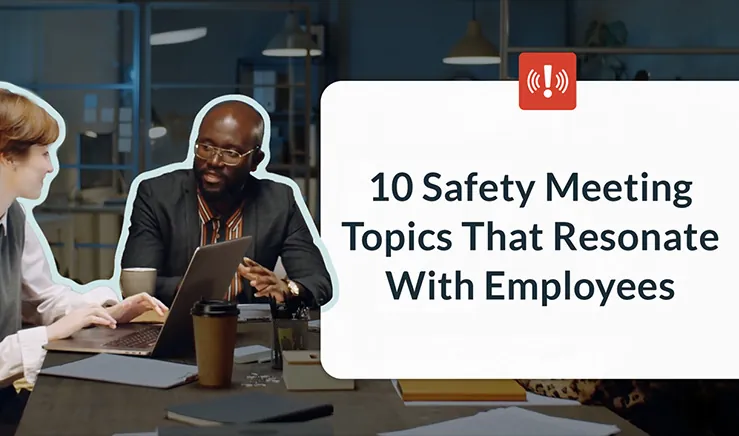
Pro Tip: Keep a running list of safety-in-the-workplace topics. With it, you can not only prepare for upcoming safety talks but also integrate those meeting topics with broader emergency planning and preparedness efforts and involve various stakeholders. You can use the Topics Sheet from the Safety Meeting Toolkit to keep track of the topics you’ve gone through and what to cover next.
The safety messages you incorporate in your safety talks and training sessions should be inspired by your work objectives and conditions. However, if you’re looking for some ideas to get you started, here are our suggestions.
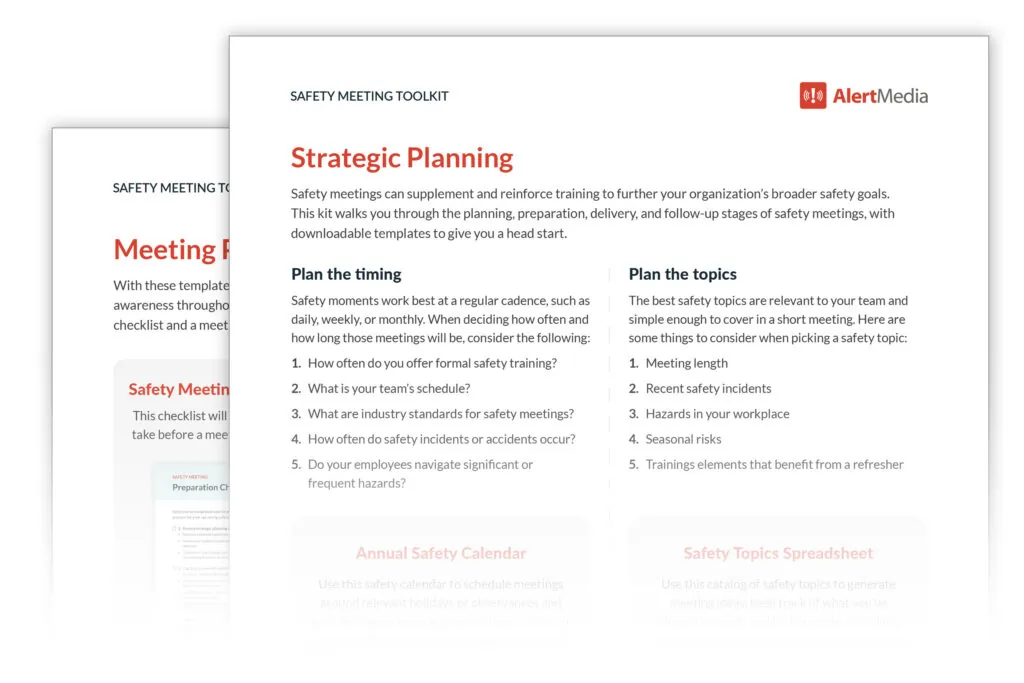
Find more topic suggestions and talking points in the Safety Meeting Toolkit .
External Hazards
“The world is changing very, very fast…to be as flexible as possible–that’s what we’re doing every day.”
— Helmut Spahn , Director of Safety, FIFA
1. Electrical safety
Improper electrical distribution is a deadly hazard in the workplace. Electrocutions are one of the most common causes of injuries and fatalities on construction sites , and daisy-chained extension cords and power strips are a disturbingly common fire safety hazard. Promote fire prevention and avert workplace injuries by inspiring everyday accountability for safe electrical setup and operation.
2. Hot work safety
Heat stress prevention is key in many fields, especially those that require outdoor work during the summer months. It’s so important that OSHA is working on official regulations to require heat safety measures from many employers. Share heat safety tips with employees who work in the heat to keep people safe and maintain operational continuity.
3. Cold work safety
Cold weather can be deadly when preparedness efforts fall short. Share cold-weather safety tips with your team before a day of working in the cold, and set them up with a buddy system so all workers have someone who can look after them.
Pro Tip: We have a whole post dedicated to December and January safety topics . Check it out for more safety meeting ideas for the winter months!
4. Defensive driving
Workers who commute or those who drive for work can be faced with unpredictable dangers on the road. It’s your duty to provide for their safety while they’re on the road. Defensive driving skills are one of the best ways to make sure your team members get to their destinations safely.
5. Anti-phishing awareness
Phishing attacks—where bad actors send fake messages claiming to be someone else to gain access to restricted systems or resources—have increased year over year . These aren’t “hacks” in the traditional sense. They rely on basic social manipulation, not crafty coding or software vulnerabilities. Reminding workers how to spot phishing attacks can save your organization a lot of time, money, and trouble.
6. Active shooter awareness
While active shooter events are rare, they are becoming a greater strain on Americans’ mental health. Hold a safety meeting to go over your active shooter response plan , and reassure employees you’re looking out for their safety.
Individual Safety
“Safety is way more than compliance…it’s a moral imperative that we send people home to their loved ones.”
— Scott Gerard , VP of Environmental Health and Safety at Moss Construction
7. Personal protective equipment (PPE) review
Just as flight attendants remind passengers of the proper use of seatbelts, life jackets, and oxygen masks before every flight, you need to remind workers of the proper use of their PPE and safety gear so they’re more confident relying on it during an emergency. Common PPE—hard hats, safety glasses, respirators, fall protection harnesses, and high-visibility vests—could be the things that prevent serious injuries or death.
8. Particulate matter safety
Depending on the job site, small bits of liquid or solid material can be suspended in the air, which can wreak havoc on human bodies if inhaled. Some of these materials, like asbestos, are particularly dangerous. Use a safety topic of the day to remind everyone about signs of hazardous substance exposure and why PPE is important in these situations.
9. Tool safety
Some power tools and hand tools, from nail guns to chainsaws, have a natural level of risk associated with their use. You can gather your team at the beginning of a workday to remind them of the safety protocols for a particular tool and reduce those risks.
10. Personal health
An employee’s health is usually impacted by their private life more than it is by their work environment. Taking time to encourage healthy sleep and exercise habits, as well as attending annual medical check-ups, can help keep your workforce in peak condition.
11. Office ergonomics
Office workers might assume they don’t face any workplace hazards, but ergonomics should not be underestimated. Poor posture, inconveniently sized equipment, and other ergonomic problems can lead to carpal tunnel syndrome, joint pain, and other safety concerns. The work should fit the worker, not the other way around. Remember to include remote workers in these talks as well.
12. Proper lifting techniques
We’ve all been there—we go to pick something up and underestimate its weight. When workers bend at the waist to lift, they risk seriously injuring their backs. Prevent these avoidable injuries by teaching proper lifting techniques as a quick safety topic.

13. Mental health & well-being
Mental health and well-being have increasingly become areas of focus across demographics, and this holds true in the workplace . Worsened by the isolation, loneliness, and despair many felt during the height of the COVID pandemic, people’s mental health is at serious risk. Show your employees you care and are there to offer resources and support.
14. Hearing protection
Exposure to noise levels above 85 decibels (roughly the volume of an electric blender) can cause permanent damage to workers’ hearing. And while OSHA requires organizations to provide hearing protection equipment, a safety talk about why they’re necessary and how to use them properly ensures workers are prepared to prevent injuries.
15. Substance abuse
Substance abuse has increased in recent years. If someone is under the influence on the job, the likelihood of an accident skyrockets. Show employees how to recognize signs that a coworker is struggling, and offer treatment and support resources to those dealing with drug and alcohol use disorders.
16. Hydration
No matter what kind of work you do, no matter where you do it, there’s always one thing your people absolutely need: water. Make sure everyone knows where they can find cool water and that they have the right (and the responsibility) to take regular breaks for water.
17. First aid refresher
First aid training is too detailed and intensive to perform during a 5-minute safety talk, but those few minutes are enough to fortify first aid skills among your employees. Potential areas of focus include a reminder of where all first aid equipment is located, the signs of a stroke, or an overview of the proper CPR compression technique.
Safety Administration
“Part of being an effective emergency manager…is helping [workers] understand why it’s important to plan.”
— Jeffrey Trask , Risk Manager at ISO New England
18. Communication review
Even if you have the best emergency notification system , good message templates, and an awesome reporting workflow, your hazard communication efforts will fall flat if employees aren’t reading the messages. Take some time to remind everyone how these notifications work, where they come from, and what to expect. You can also confirm all employees’ contact information as a follow-up action item.
You can use the Follow-Up template from the Safety Meetings Toolkit to communicate after your safety talks.
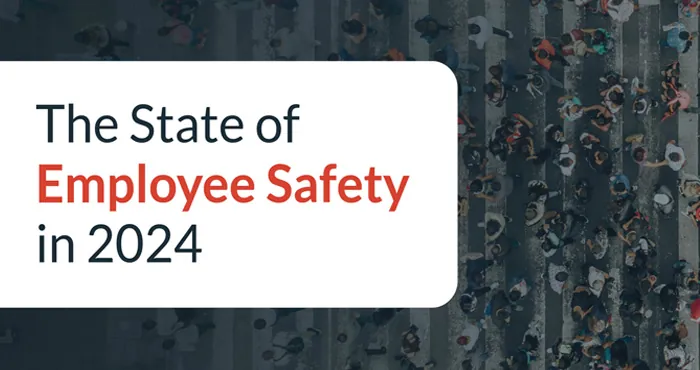
19. Accident reporting
While you can do a lot to make accidents less common, it’s very difficult to eliminate them entirely. While you work toward that goal, consider a short safety talk to review standards, rigorous accident reporting procedures, and after-action reports. These will help prevent similar accidents or near misses in the future.
20. Importance of work stoppages
Some emergencies are made much worse by the “bystander effect.” When a worker feels that they don’t have the authority to stop an unsafe activity, they likely won’t step in when something goes wrong. They might instead opt to wait for a supervisor to make the call—but during an emergency, seconds matter. Hold a meeting to make sure everyone knows that they are within their right to stop any dangerous work and will not be penalized for doing so.
21. Safety culture
Your organization’s safety culture is the aggregate of attitudes, behaviors, and practices regarding safety. It’s key to developing a safe, productive, and caring workplace, but it can only be accomplished with continuous effort. Morning safety talks can keep up your momentum in prioritizing safety first.
22. Workplace access protocol
Who’s allowed on the work site? Who isn’t? What about clients, vendors, and guests? Take a moment to remind your team about proper access control, such as not holding the door open.
23. Labeling potential hazards
Labels for potential hazards like slippery floors or unexpected steps can go a long way in keeping everyone aware and decreasing slip, trip, and fall accidents. Some workplaces may also have dangerous chemicals or zones that are unsafe to enter when equipment is turned on, and warning labels can promote situational awareness.
General Safety
“If workers aren’t following specific protocols, very drastic things can happen not only to them but to their coworkers.”
— Diana Warden , Director of Safety and Security at the Dallas Zoo
24. Situational awareness
No matter the environment and type of work, situational awareness is perhaps the single most significant habit that can keep employees safe. Hold a short safety talk to gauge how situationally aware your employees are. This evaluation will help you plan for more in-depth training to guide them in increasing awareness of risks they may face.
25. Ladder safety
There’s a reason ladders are associated with bad luck: They’re a deceptively deadly tool we frequently rely on. Proper ladder setup, use, and oversight can avoid painful and costly mistakes.
26. Forklift safety
Working with heavy machinery, including forklifts, can be dangerous without the proper training. Safety talks about safe forklift driving and handling are critical for those working with or even near these tools.

27. Workplace violence
Workplace violence is increasingly common, particularly in service industries and healthcare. Talk with your employees about the types of workplace violence , warning signs, and prevention steps they can take, including how to identify and report potential violence through an open, non-punitive channel.
28. Emergency exits
Every indoor workspace should have clearly marked emergency exits as part of a fire evacuation plan . That plan requires you to regularly review these emergency exit routes with your team, especially if you’re working in a new, unfamiliar location or in case one or more exits become blocked in an emergency.
29. Heavy vehicle safety
Heavy vehicles—such as forklifts, trucks, cranes, and other heavy-duty machines—have the potential to cause damage to people and property. Make sure all workers are aware of the dangers and how to keep themselves and others out of harm’s way.
30. Fire extinguisher use
Portable fire extinguishers are ubiquitous and extremely effective at protecting people and property from fire damage but only if they’re used properly. When holding a short fire safety talk about correct fire extinguisher use, try turning it into a game to see who has the best fire extinguisher aim.
31. Confined space awareness
Some confined spaces have respiratory hazards, engulfment hazards, electrical dangers, or any number of factors that make them more dangerous than your average crawlspace. These are often restricted by posted signage. Make sure your team knows who is and isn’t permitted in these spaces and what the signage looks like. Trenching work, pipework, and other assignments are associated with these risks.
32. Carbon monoxide safety
Dubbed the “silent killer” because it’s undetectable by humans, carbon monoxide is deadly and you must monitor for it, especially in the presence of flammable gasses, exhaust, and heaters. Ensure your employees know the signs of carbon monoxide poisoning and how to double-check that CO monitors are working properly.
Every Day Can Be a Safe Day
Carving out small chunks of time to regularly review digestible safety topics goes far beyond just preparing your employees for individual hazards. By making these short safety talks a familiar fixture of everyone’s days, you ingrain the idea that safety is always the number one priority. But it’s not safe for safety’s sake—it’s expressly to protect your business, its operations, and its people so everyone can work confidently, without disruptions.
More Articles You May Be Interested In
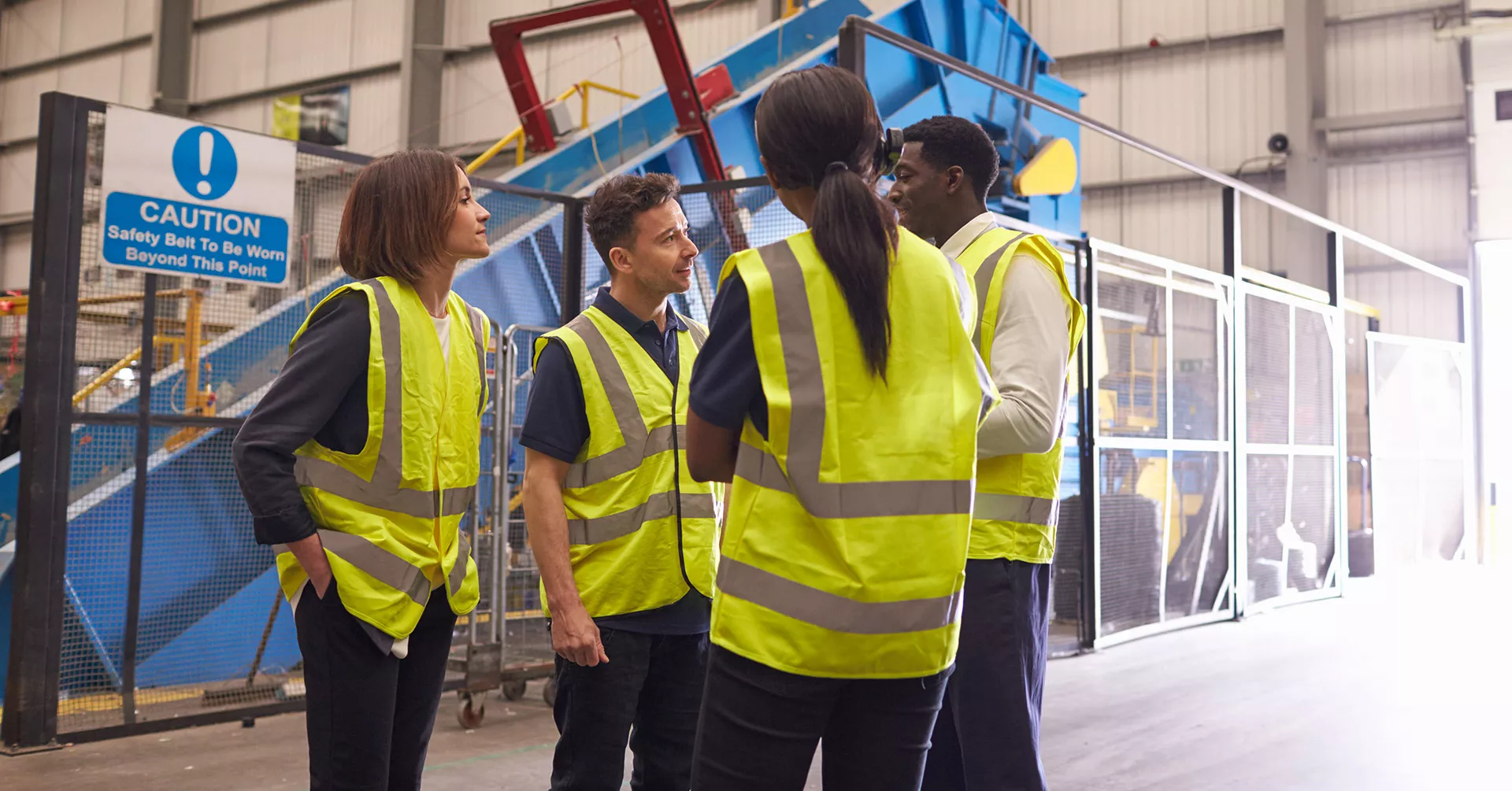
2025 Safety Calendar
Please complete the form below to receive this resource.
Check Your Inbox!
The document you requested has been sent to your provided email address.
Cookies are required to play this video.
Click the blue shield icon on the bottom left of your screen to edit your cookie preferences.

Never Give up on Your Dream, Motivational Speeches
When you show courage in the ..., template: letter to request to attend a conference, do you want to attend a ..., motivational speech template to congratulate your team, an excellent safety motivational speech, i recently saw safety ....
- guest speaker
- motivational speaker
- meeting planner
How to Write a Safety Speech
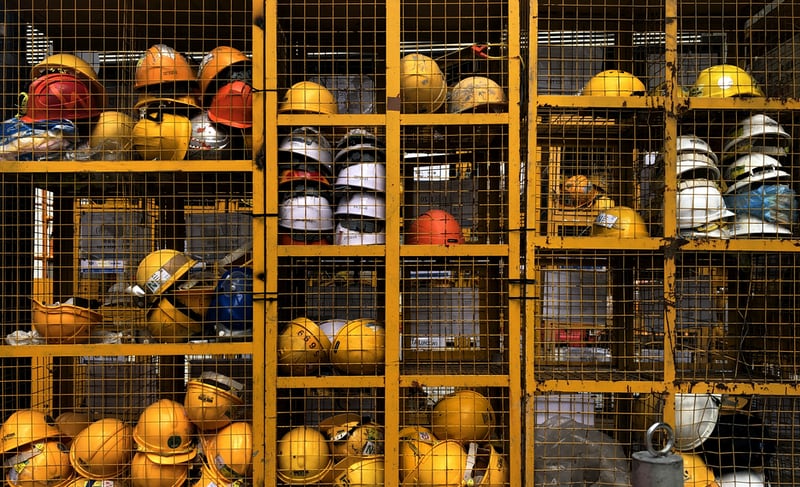
Safety is thrust into the spotlight when someone gets hurt.
You know safety is important, but how do you get everyone on board?
Of course, you're committed to safety, but when demands on your time and your people increase, it's harder to keep it a priority.
In a busy work environment, it's easiest to keep safety top of mind with a safety speech. A motivational safety speech unites people positively around safety excellence. It safeguards your culture.
If you want employees to look out for each other, they need to be motivated.
Safety leaders usually rely on fear-based messages to gain safety compliance. In the short term, they work. Sustaining a safety culture requires motivation. A motivational safety speech builds positive momentum, and long term buys into safety.
Training is the most critical component of a companies safety management program. Everyone benefits from a safety speech through fewer workplace injuries, reduced stress, and a better team environment.
Safety training allows employees to learn their jobs properly.
According to OSHA, Thirty-four states have requirements or voluntary guidelines for workplace injury and illness prevention programs. They recommend initial training and refresher training.
Many organizations have a safety day, a safety program, and regular safety moments that require a safety speech. To plan your safety speech consider the following:
The Audience.
Many safety speeches evolve around front line workers. Because they are on the front line, they are often most at risk. A crowd like this tends to be hands-on, so keep your speech active and work-related. Continue to involve this audience in your safety speech; ask them for feedback and ideas.
All parts of an organization are part of safety, including administration, leadership, and management. Especially if they are not a front line, you need their buy-in. Safety is a priority for everyone, but it's not top of mind (their most crucial safety alert is a paper cut!) With this audience you need to build a logical argument to show them how safety is a priority, especially for the front line. It's a part of your culture.
The Current Safety Environment.
Progress should be calculated and recognized for it to count. Your safety speech is the ideal time to acknowledge progress, appreciate the effort, and highlight the opportunity to improve. Have these stats available to weave into the safety speech.
Also, report misses, near misses, and any occupational health safety policy change.
A GREAT SAFETY SPEECH GOALS:
- Give people permission to think about and be involved in safety culture proactively.
- It should recognize and ( sometimes) reward safe behavior
- Make it safe to speak up about unsafe conditions
- Sell people on safety
- Build a team culture around safety
- Encourage people to slow down when it comes to safety
- The role of stress on safety
Interweave these ideas into your safety speech messaging.
Below is a SAMPLE SAFETY SPEECH:
People are safer on the job than at home.
We work hard to create a culture where you can communicate your needs, state your limits, and say "NO" Your safety is our priority.
Nobody on our teams will feel uncomfortable reporting near misses or unsafe work practices. We thank you all for your efforts protecting our safe work culture
We are committed to safety because we are committed to you.
Were committed to your health, your wellness, your future.
Our safety record shows that commitment. ( talk about your safety record)
We can't do it without you.
It's your diligence that matters. It's your grit and dedication that matters. It's you that matters.
It takes a team to do great things. Remember to lean on your team and encourage each other to grow.
Everybody deserves to feel safe at work.
Never feel uncomfortable about speaking up. Your voice matters.
Every time you speak up about safety, you could be saving lives.
Our workloads have increased. With less time and resources, we lose focus on safety.
When we neglect safety, we neglect each other.
When it comes to safety, We have your back.
Slow down, look around, and make safety awareness your priority.
( reinforce safe work behaviors needed to do the job)
We want to reinforce the goals of our safety program.
Review accident loss reports, review safety bulletins, and safety procedures, and weave this into your safety speech.
(End of Sample Safety Speech)
Remember to keep your message firm but uplifting.
Listening to accident statistics or learning about new procedures can be annoying to employees. Keep your message positive and reassuring. Your team needs to feel like they are achieving something, and their efforts are contributing to a safety culture.
Offer examples and suggestions for improvement—layout strategies that work and how we can be more successful. In any safety speech, people will only remember several points, so keep it short and memorable.
As a safety motivational speaker , I focus on getting the audience to buy into a healthy culture where safety has to be a priority.
Ready to hire a safety speaker? Find out how.
Topics: howtowriteamotivationalspeech , keynotespeakers , safetyspeaker , safetyspeech
Get Notified When New Articles Are Posted
Let's get social, don't settle for a lackluster event.
Jody is a motivational speaker who is passionate about inspiring workplace enthusiasm

Follow Jody on Youtube
For more motivational videos and content, follow me on Youtube.
hbspt.cta._relativeUrls=true;hbspt.cta.load(24553, '6d479642-51e6-443f-9241-a303ac83abe8', {"useNewLoader":"true","region":"na1"});
Popular post, contact jody.
403.540.4055 Email Us Here
- Meeting Planners
- All Work & No Say
Copyright © 2024 I Do Inspire | All Rights Reserved
Created by Revenue River
Speech Tips for EHS Professionals
Figuring out how to ensure employees’ safety? Speech is a great inspirational tool. Here’s how to give a speech your team will remember.

Whether you’re putting together a safety orientation for new employees or getting employees to comply with safety procedures , there are some moments that demand a rousing safety speech.
The trick? Writing a speech that sticks.
For those figuring out how to ensure employees’ safety, speech structuring is everything. Here are a few essential tips to write a memorable safety speech.
Explain Why Safety Matters
A great safety speech is more than just telling employees how to improve. It’s about motivating them with a unique opportunity to come together for the common good. Or at least, that’s how it worked for Paul O’Neill’s inaugural speech as CEO of Alcoa in October 1987, now regarded as one of the greatest safety speeches of the 20th century .
O’Neill began with a simple sentence, “I want to talk to you about worker safety.” In an instant, he had the entire room’s attention. Then, he began to lay out his message, “Every year, numerous Alcoa workers are injured so badly that they miss a day of work. Our safety record is better than the general workforce, especially considering that our employees work with metals that are 1500 degrees and we have machines that can rip a man’s arm off. But it’s not good enough. I intend to make Alcoa the safest company in America. I intend to go for zero injuries.”
In this speech, O’Neill did more than just cite safety numbers or point to an opportunity for improvement. He created a sense of urgency and made safety his central goal.
Most importantly, he explained why safety mattered. It was not enough that Alcoa had a decent safety record for its industry. O’Neill made it Alcoa’s responsibility to be the safest company in America. And while your speech doesn’t need to be the clarion call to launch an era, it should achieve a similar aim: motivating employees to see why safety matters.
Tell a Story
A good way to do this is by telling a story.
Remember, people relate to each other through stories. It’s how we connect as a species. So if you trot out safety statistics and regulations, your employees just won’t care. They can’t relate to laws or numbers.
However, they can relate to a story about a colleague following safe work procedures to make sure they go home to their kids safely every single day. Take the time to find these stories and share them (with the permission of your employees, of course!)
Figuring Out How to Ensure Employees’ Safety? Speech Isn’t Enough
When the time comes to inspire people to action, a speech is a great way to kick things off. But if you’re figuring out how to ensure employees’ safety, speech won’t cut it for the long-term. You need the tools for employees to act on the message.
That’s where we come in, with safety software that makes it easy for every employee to contribute to safety. Get in touch today to learn how our software can empower your whole team.
Similar posts
Effective and positive safety interaction examples.
How do you create a positive safety culture? It starts with good interactions. Here are a few positive safety interaction examples to try.
Everyday Strategies for Employee Growth
Here’s how you can make every day at the office an opportunity for growth.
The Brave New World of IoT Safety
The future of safety data is here, and IoT safety sensors can help your team make smarter decisions than ever.
Get notified on new marketing insights
Be the first to know about new B2B SaaS Marketing insights to build or refine your marketing function with the tools and knowledge of today’s industry.

IMAGES
VIDEO
COMMENTS
Safety Speech for Graduation Ceremony. Dear Graduates, Congratulations on your achievement! As you prepare to enter the next phase of your life, I want to take a moment to remind you of the importance of safety. Safety is a crucial aspect of our daily lives, and it should be taken seriously. Whether you’re entering the workforce, starting a ...
A great safety speech isn’t about telling staff to improve safety. Instead, it’s a unique opportunity to motivate staff to work together for a common good. On a windy day in October 1987, the new CEO of Alcoa, Paul O’Neill, gave his maiden speech to shareholders. Most CEO’s would use this opportunity to get shareholders excited that ...
OSHA requires regular safety day speeches to provide an opportunity to collaborate and provide a broader idea of safety. Safety first . These safety keynotes are designed to remind and inspire employees to be safe on the job. Good motivational safety speeches will be short and frequent. A safety speech will be from 5 to 15 minutes and should be ...
National Safety Day is observed in India on March 4 every year. It is a day to raise awareness about the importance of safety at workplaces and in our daily lives. The day focuses on promoting safety measures and preventing accidents. Every year, a theme is chosen for National Safety Day to highlight a particular area of safety concern.
It’s so important that OSHA is working on official regulations to require heat safety measures from many employers. Share heat safety tips with employees who work in the heat to keep people safe and maintain operational continuity. 3. Cold work safety. Cold weather can be deadly when preparedness efforts fall short.
It should recognize and ( sometimes) reward safe behavior. Make it safe to speak up about unsafe conditions. Sell people on safety. Build a team culture around safety. Encourage people to slow down when it comes to safety. The role of stress on safety. Interweave these ideas into your safety speech messaging.
real listening, clear speech, and well-run meetings. This is where effective safety conversations come in— and where your role as a supervisor is key. The example you set, and the way you talk to workers about safety, has a huge impact on the company’s safety and health program, safety culture, and ability to reduce injury and illness.
This balance of humor and emotion is what makes Ricky’s Workplace Health and Safety Speech so unique. It’s not a dry lecture but a powerful experience that has a lasting impact, inspiring the audience to prioritize safety. At the end of the day, Ricky Rollins ’ ultimate goal is to change behavior. He doesn’t want people to just listen ...
Or at least, that’s how it worked for Paul O’Neill’s inaugural speech as CEO of Alcoa in October 1987, now regarded as one of the greatest safety speeches of the 20th century. O’Neill began with a simple sentence, “I want to talk to you about worker safety.”. In an instant, he had the entire room’s attention.
5. Continuous Improvement: Ricky Rollins' safety speeches emphasize the importance of ongoing evaluation, feedback, and adaptation in pursuing safety excellence. By fostering a culture of continuous improvement, organizations can identify and address safety hazards more effectively, ensuring a safer workplace for everyone.